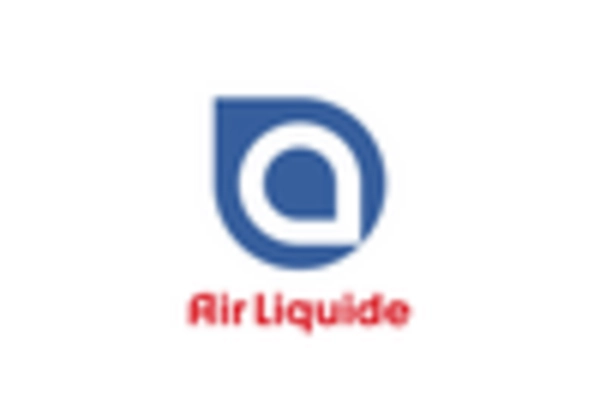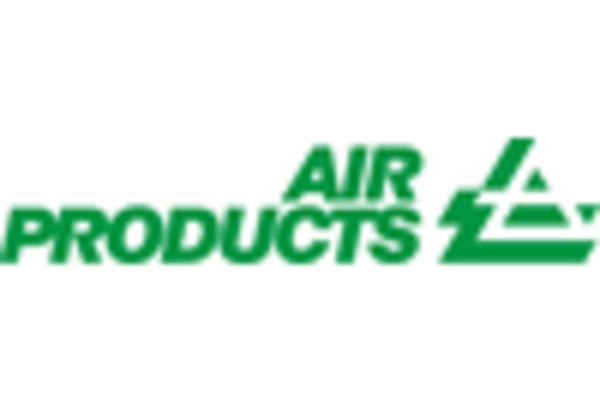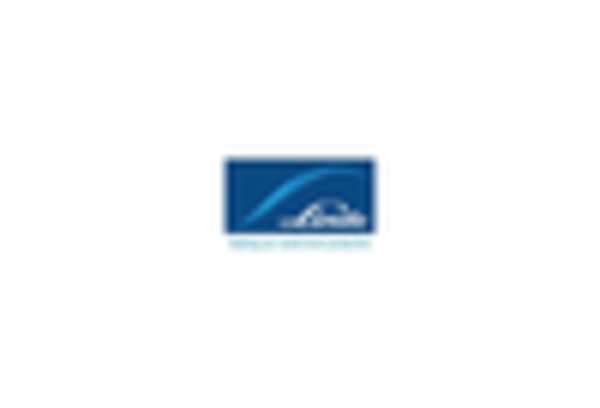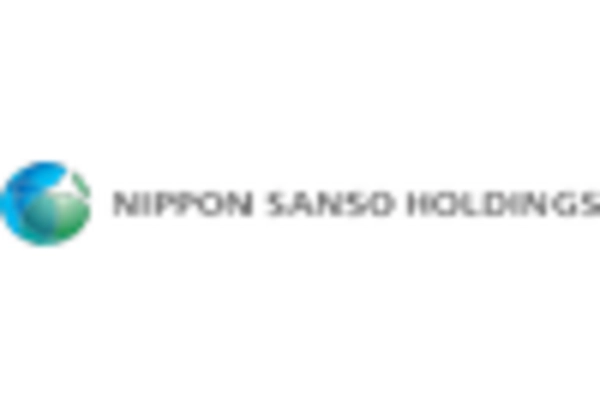Increased Industrial Applications
The gas liquid-argon market is experiencing growth due to its expanding applications across various industrial sectors. Industries such as metal fabrication, electronics, and pharmaceuticals are increasingly utilizing argon for its inert properties. In metal fabrication, argon is essential for shielding during welding processes, enhancing the quality of welds. The electronics sector employs argon in the production of semiconductors, where its inert nature prevents contamination. As these industries continue to expand, the demand for argon is projected to rise, potentially increasing market value significantly. The gas liquid-argon market is thus poised for growth as it aligns with the needs of these evolving sectors.
Growing Demand for Specialty Gases
The gas liquid-argon market is benefiting from the rising demand for specialty gases in various applications. Argon is increasingly recognized for its role in providing high-purity environments necessary for processes such as laser cutting and chemical vapor deposition. The market for specialty gases is expected to grow at a CAGR of approximately 5% over the next few years, driven by advancements in technology and increased production capabilities. This trend indicates a robust future for the gas liquid-argon market, as manufacturers seek to enhance product quality and operational efficiency through the use of argon.
Regulatory Support for Clean Technologies
The gas liquid-argon market is likely to gain momentum from regulatory support aimed at promoting clean technologies. Governments are increasingly implementing policies that encourage the use of inert gases like argon in various applications, particularly in industries focused on reducing emissions. This regulatory environment fosters innovation and investment in cleaner production methods, which could lead to a surge in argon demand. The gas liquid-argon market stands to benefit from these initiatives, as companies adapt to comply with environmental regulations while enhancing their operational sustainability.
Technological Innovations in Gas Production
The gas liquid-argon market is likely to benefit from technological innovations in gas production methods. Advances in cryogenic distillation and membrane separation technologies are enhancing the efficiency of argon extraction and purification processes. These innovations not only reduce production costs but also improve the overall quality of argon supplied to various industries. As production becomes more efficient, the gas liquid-argon market may see a decrease in prices, making argon more accessible to a broader range of applications. This could potentially stimulate demand and drive market growth.
Expansion of Research and Development Activities
The gas liquid-argon market is influenced by the expansion of research and development activities across multiple sectors. Increased funding for scientific research, particularly in materials science and engineering, is driving the need for high-purity argon. Researchers utilize argon in various experimental setups, including studies on superconductors and advanced materials. This trend suggests a growing reliance on argon in innovative applications, which could bolster the gas liquid-argon market. As R&D activities continue to flourish, the demand for argon is expected to rise, further solidifying its market position.

















Leave a Comment